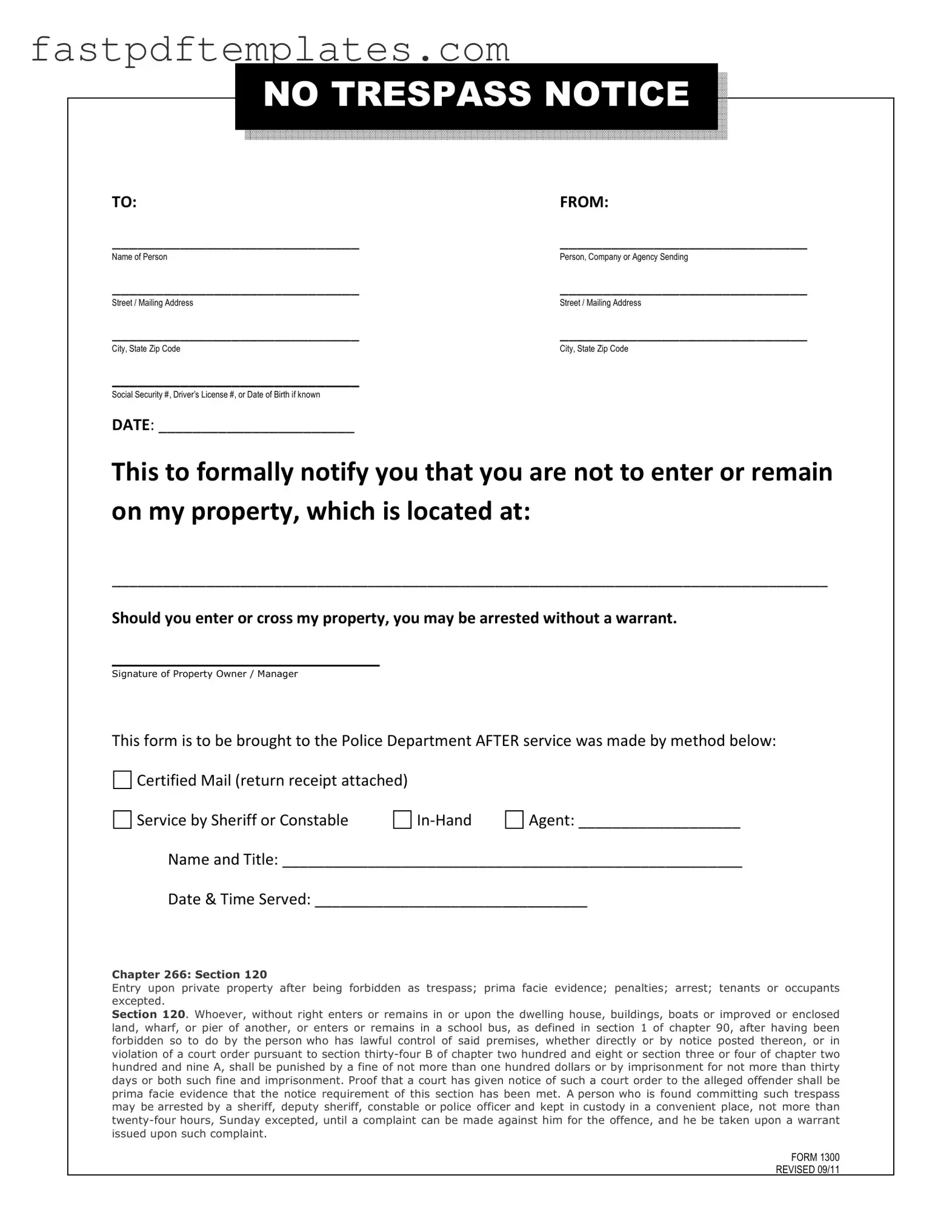Blank No Trespassing Letter Form
A No Trespassing Letter is a formal document used to inform individuals that they are not permitted to enter or remain on a specific property. This letter serves as a clear warning, outlining the property owner's rights and the potential legal consequences for trespassing. By using this form, property owners can take proactive steps to protect their space and ensure their wishes are respected.
Access Document

